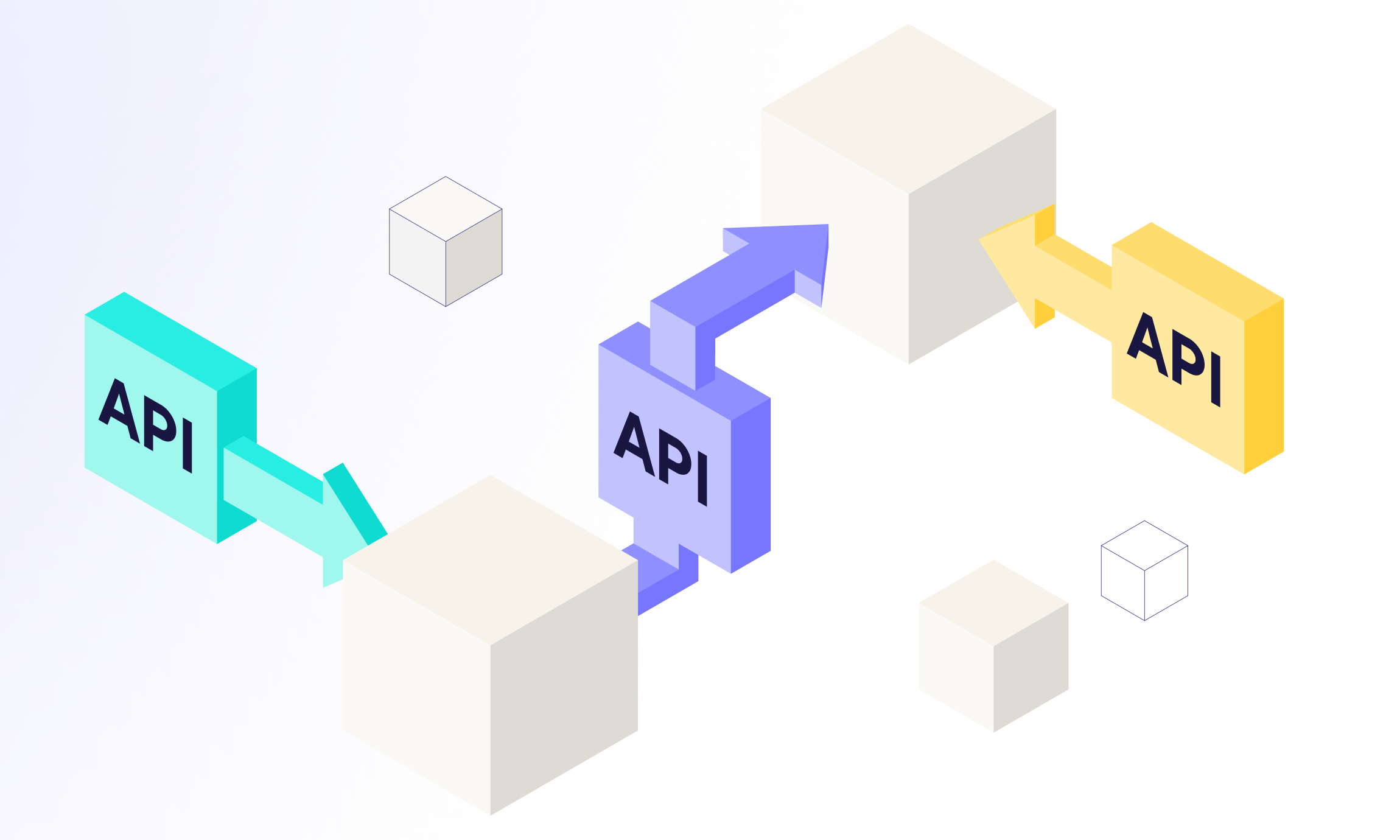
Composable architecture has emerged as an attractive option for business and technology leaders seeking a flexible and scalable approach. And guess what — embracing composable commerce isn't nearly as daunting as you may believe!

It's been proven time and time again that commercetools Composable Commerce is the optimal choice for businesses aiming to create eCommerce websites that are not only highly flexible, scalable and cost-effective, but also deliver incredible customer experiences. So, why do some executives remain apprehensive about embracing this approach, believing it to be complex and fraught with risks? There are many factors contributing to these misconceptions. Firstly, the fact that composable commerce is still relatively new on the digital stage creates the impression of an unproven technology. Secondly, there's a prevailing belief that only digitally mature companies can pull it off.
That's why we're here to dispel these notions and shed light on how migrating to and harnessing the power of commercetools Composable Commerce simplifies your commerce endeavors and carries far fewer risks than mistakenly perceived. In reality, it proves to be a considerably less risky endeavor compared to both monolithic and homegrown solutions, which may appear easier to implement initially but often lead to ongoing complexities and challenges. Therefore, let's explore the top eight compelling reasons that illustrate how composable commerce — implemented through commercetools — is a significantly smoother and lower-risk path than you might assume.
1. Phased approaches: A gradual evolution
The migration to commercetools Composable Commerce doesn't have to be an all-or-nothing transition, as you can utilize a phased approach to significantly reduce complexity and risks. In other words, a phased approach allows businesses to embrace changes in stages. By replacing components one at a time, companies can smoothly transition from a monolithic architecture to a microservices-based approach, giving them full control over every single step in a transition to composable.
In practical terms, migrating in phases provides a safety net for businesses. If issues arise during the migration, there’s an option to either revert to the previous state or address the problem within the specific component causing the challenge. This risk mitigation strategy significantly reduces the complexity of managing unexpected problems and uncertainties that often arise during large-scale transitions. Moreover, commercetools Composable Commerce empowers businesses to tailor their migration journey by selecting specific components that align with their unique needs and priorities.
This flexibility ensures that only the most relevant features are implemented, reducing the complexity of unnecessary changes. Businesses can strategically choose which components to replace first, ensuring a gradual but controlled evolution toward a composable architecture. This approach minimizes the likelihood of disruption and allows for a smoother transition.
2. Reduced complexity through step-by-step integration
Composable commerce simplifies the migration process further by promoting step-by-step integration. Instead of attempting to transfer all data and processes in one massive transition, businesses can take a more measured and manageable approach. This piecemeal integration approach effectively avoids data silos and mitigates the challenges that often come with massive data migrations.
This staged approach allows companies to focus on specific areas of their eCommerce ecosystem, making the migration more predictable and less complex. For instance, they can first integrate the frontend components, ensuring a seamless customer experience, and then gradually transition to the backend systems and data. By breaking the migration into manageable steps, businesses can avoid potential bottlenecks and ensure that each stage of the transition is thoroughly tested and optimized for peak performance.

3. Continuous testing and optimization
The iterative nature of commercetools Composable Commerce encourages continuous testing and optimization of newly introduced components. This iterative approach is instrumental in identifying and addressing issues at an early stage.
Continuous testing and optimization not only reduce complexity but also improve the overall quality of the eCommerce ecosystem. Any potential issues that arise can be swiftly addressed and resolved, preventing them from escalating into larger, more complicated problems. This approach is akin to fine-tuning a musical instrument, as it ensures that each component within the commerce architecture functions harmoniously and efficiently.
4. Incremental innovation and reduced complexity
Composable commerce places a strong emphasis on incremental innovation, which enables businesses to implement enhancements gradually. This approach offers an elegant solution to the challenge of addressing both current and future issues. By dealing with problems and enhancements on a small scale as they arise, businesses can prevent these issues from growing into complex, system-wide challenges.
Incremental innovation also simplifies the process of change management. It ensures that new features and capabilities can be introduced in a controlled manner, reducing the risk of disruption and complexity. In essence, businesses using commercetools Composable Commerce are better equipped to stay ahead of the competition by continuously and incrementally improving their eCommerce architecture. This approach aligns well with the rapidly evolving digital commerce landscape, where adaptability and innovation are key to success.
5. API-centric solutions
One of the cornerstones of composable commerce is its reliance on APIs (application programming interfaces). Using APIs simplifies integration and interoperability, which, in turn, reduces complexity within the overall commerce infrastructure. By creating well-defined APIs, businesses can ensure that different components and systems can communicate seamlessly with each other, promoting flexibility and adaptability.
APIs serve as the connectors that enable different parts of the commerce ecosystem to work together, from the frontend user interfaces to the backend data management systems. This approach reduces the complexity of building and maintaining custom integrations, making the infrastructure more adaptable and cost-efficient. The use of APIs not only simplifies the initial migration process but also ensures that future integrations and expansions are streamlined and less complex.

6. Managing risks and embracing change
Composable commerce is designed to help businesses reduce risks and embrace change. Its modular and decoupled nature mitigates single points of failure and operational issues. In a traditional monolithic architecture, a problem in one part of the system can ripple through the entire infrastructure, causing widespread disruptions. However, commercetools Composable Commerce segments different functions and services, reducing the impact of any single issue.
Moreover, the flexibility in data modeling is a key feature that helps businesses build an adaptable infrastructure. As business needs evolve and customer demands change, being able to modify data structures without causing system-wide chaos is invaluable. This adaptability ensures that the commerce ecosystem can evolve alongside the business, reducing the complexity of implementing changes and accommodating growth.
7. Flexibility in completing tech stacks
Post-migration, businesses can complete their technology stack with best-of-breed solutions. The composable approach encourages a "build-and-buy" strategy that allows for integrating components that make a business unique while incorporating MACH® philosophy-aligned vendors to reduce integration challenges.
This flexibility means businesses don't have to compromise on their unique requirements. They can select the technology that aligns best with their specific needs, further reducing complexity. Whether it's a specialized tool for enhancing the customer experience or a backend system optimized for their niche, businesses have the freedom to choose components that align perfectly with their strategy. This approach not only reduces the complexity of the migration itself but also simplifies ongoing management as businesses can adapt their tech stack as needed.

8. Data management and reduced complexity
A flexible data model offered by composable commerce helps businesses manage and leverage data efficiently. By adapting data structures to changing needs, businesses can ensure a seamless customer experience while reducing complexities associated with inefficient data handling.
In traditional monolithic systems, rigid data structures can be a significant source of complexity. Making changes to these structures often requires extensive modifications and testing, which can disrupt the entire system. In contrast, commercetools Composable Commerce allows for the easy modification and expansion of data models, simplifying the process of accommodating evolving business requirements. This reduced complexity extends to data migration, transformation and integration processes, all of which become more agile and efficient under a composable architecture.
9. Infinite adaptability
The beauty of composable commerce lies in its boundless adaptability. Thanks to its inherently modular architecture that enables a best-of-breed approach, adding or removing components becomes simple and minimizes the risk of being stuck with a solution you don't like with no way to easily change it. Composable commerce lets businesses mix and match components like customer experience, payment systems and inventory management from different providers, allowing for fast adjustments without needing a full overhaul. So, if you don't like your CMS vendor, it's a quick goodbye and an easy hello to replacing it with one that works best for you.
Traditional systems often struggle with new technology, but composable commerce makes this effortless with APIs and microservices that connect different components easily. This approach means businesses can add the latest innovations, like AI-driven recommendations or augmented reality, without big redevelopment efforts. Its flexible nature allows businesses to create tailored eCommerce solutions that fit their brand and customer needs perfectly. By reducing the need for extensive changes, composable commerce lowers the risk of disruptions and ensures a more streamlined integration process.
Bonus: Companies with no digital footprint that have gone composable
Contrary to popular belief, companies need not be digitally mature to adopt commercetools composable commerce. A prime example is Dawn Foods, a century-old American manufacturer of baked goods, which successfully implemented an eCommerce solution for retail bakery customers as an option for phone and in-person orders. This strategic move allowed customers to browse through its extensive product catalog online, place orders with one click without having to enter shipping or billing information, and make payments. With the seamless cart and checkout processes powered by commercetools, customers can also see their order history, select desired items and reorder in only three clicks. Since the launch, Dawn Foods has witnessed a remarkable increase in sales orders, with a significant 25% of all orders being processed online.
Additionally, another case in point is Normet, a B2B provider for underground mining and tunneling projects. Normet successfully digitized its operations in just four months using a phased approach. Normet’s implementation process — from the first line of code to full production deployment — took only 4.5 months and stayed within budget. The results were immediate, as customers quickly embraced the eCommerce portal for their ordering needs. This demonstrates that commercetools Composable Commerce is accessible and incredibly beneficial for companies at any stage in their digital maturity.
Interested in reaping the benefits of a composable commerce platform? Dive deeper into the benefits of migrating to composable commerce with our report, The State of eCommerce: Retplatforming and Migration Trends for 2024.